
1. Highlining the Needles, Sequoia National Forest, California
“At this moment I was facing down canyon, which was a very exposed feeling!” says climber-highliner Scott Turpin, who was photographed at sunrise walking between two towers in the Needles in California's Sequoia National Forest. “The direct exposure to the notch was only about a hundred feet, but on all sides, the ground fell away quickly down to the Kern River thousands of feet below.”
To play in the Needles, Turpin and his friends had to hike three miles on a good trail followed by about a half mile of third-class scrambling to get to the world-class climbing destination. The line was rigged between two of the most prominent towers, the Sorcerer and the Charlatan.
“I could feel the sun moving quickly and saw it finally out of the corner of my eye,” Turpin recalls of the chilly morning. “The moment was brief, as are most perfect moments. I turned around, slid out on the line, found my breath, and walked back.”
Getting the Shot
“Two years ago, Scott and I had been to the Needles with a few other friends to rig and shoot, but due to high winds, the line never went up,” recalls photographer Jeremiah Watt. “[Scott] was headed for a rematch and wanted to know if I'd be interested in shooting."
Photographing from about 200 feet below the line, Watt planned his lighting and waited for the right moment. “There's a large granite spire just behind my left-hand side. I knew that first light would be stunning, but thought that as soon as the sun broke the horizon, it would throw the shadow of the spire across the face and spoil the image,” he says.
Instead, Mother Nature surprised the photographer. “The sun graced the shoulder behind me and tattooed this crisp silhouette of the pines on the face," Watt says. "If the sun had been a fraction higher or lower it wouldn't have worked. ‘F/8 and be there’ is an old photo mantra. Granted this is at F/5, but being there was the ticket.”
Watt used a Nikon D700 camera and a Nikon 16-35mm lens.
2. Climbing Ali Baba, Aiglun, France
“This is one of the harder multi-pitch routes in this style, but it’s also one of the most beautiful,” says French climber Gérôme Pouvreau, seen here at the end of the fifth pitch on the eight-pitch, nearly thousand-foot Ali Baba route in Aiglun, southern France. “The colours are beautiful and only the song of birds breaks the silence. You’re going from discovery to discovery very high above the ground. It’s like an exploration.”
Pouvreau and his climbing partner, Florence Pinet, hiked for an hour and a half to arrive at this spot. “We started climbing at 7 a.m. and did not finish until 4 p.m.,” recalls Pouvreau. “I was very tired and still had to walk from the top back to the car.”
Getting the Shot
“I knew another part of this crag, but not Ali Baba, which translates to ‘hidden wall,’” says photographer Sam Bie. A strong climber himself, Bie climbed and photographed this route for the first time with Pouvreau on this trip. Bie relied on his climbing skills to get his shot. “It’s a bit acrobatic to climb along the wall and show the magnitude of the cliff. My vision was completely different than the climber’s,” Bie says.
Roped in and ready to capture Pouvreau on the long, hard pitch, Bie went into the shoot without a set photo in mind. “The rock dictates your inspiration,” he says. “There is no plan beforehand, beyond to be in place and be ready.”
Bie photographed with a Nikon D700 Nikkor 14-200mm lens.
3. Kayaking the Nile Special, Uganda
"Nile Special is considered one of the best big waves in the world - and it is," says Spanish kayaker Gerd Serrasolses. "Easy access, eddy service so you don't have to walk back up, warm water, beautiful landscapes, tropical fruits...and the list goes on and on."
Serranoles and about 20 other kayakers arrived at Uganda's Kalagala Falls to run Nile Special and other White Nile rapids in February 2012. "You can just get a ride on a truck or a motorbike to put in almost anywhere on the river."
A new dam constructed upriver last year altered the flow of the river, a legendary kayaking and rafting location. "Despite losing all the top rapids due to the dam, the river still has a lot to offer,” Serrasolses says. "We had such fun times every day in the water and playing with the kids, who are always hanging out and want to talk and use your kayak."
Getting the Shot
Photojournalist Michele Sibiloni shot kayaking for the first time while covering a wave known as the Nile Special below Kalagala Falls. Familiar with a wide variety of extreme sports, Sibiloni knew he wanted to get a tight frame to capture the power of the river and get close to the action. “In order to impart the roughness and the power of those rapids, I needed to be at the same level as the kayaker,” he says. “I managed to get close to the water, where you can feel the water and its power.”
4. Skiing the Swatch Skiers Cup, Valle Nevado, Chile
“I was focused on my line and making a clean landing,” says skier Richard Permin of pulling off this straight big-air trick near Valle Nevado, Chile, during the big-mountain day of the Swatch Skiers Cup in early September 2012. In this competition, Team Americas and Team Europe go head to head. “There is more pressure during contests than when filming big productions, as I only have one chance to perform,” Permin says. “Stress management is key.” Difficult snow conditions prevented the French skier from attempting a more complex trick on that particular jump, though he still scored a point for Team Europe.
When “his” winter heads south, so does Permin. “At this time of year, I train a lot in the Southern Hemisphere for the coming winter season, learning new tricks,” says Permin, who also went surfing at Pichilemu while in Chile during this trip. “In that sense the Swatch Skiers Cup is a great opportunity for me to spend a week with the best riders in the world on Valle Nevado. We share some of our new tricks and I can see what the others are working on.”
Getting the Shot
“We went to the Valle Nevado backcountry by heli. It's pretty much the only way to reach this mountain,” says photographer Jeremy Bernard. Having previously photographed both in Chile and the first Swatch Skiers Cup, Bernard was familiar with the terrain. “Logistically, it's always a challenge to shoot this kind of event. The face is wide and the lines to ski are unlimited.”
“With experience, you know what locations and frames work best," he says. "I was lucky to see Richard skiing in front of me. He took this direction toward the cliff, and I knew it would be a great shot. I wanted to give the impression of a void and steepness. The light was just perfect at this moment; the sun hit the top of the cliff, leaving the landing in the shade. I can't control everything, but sometimes everything works perfectly.”
5. Ultra Trail Running in the French Alps
“Give your best effort, no matter how you are feeling, and you can always feel proud,” is the encouragement 28-year-old ultra trail runner Mike Foote gives his Missoula, Montana, track-and-field high school students - and it helped him power into a third place finish in the 10th The North Face Ultra-Trail du Mont-Blanc (UTMB) last weekend in the French Alps. “At the 50-kilometre mark, I started to run hard, getting extra energy from my sister and the cheering crowds in the aid stations. I thought to myself, It doesn’t matter what spot I get in, as long as I give my best effort.”
This year the UTMB, the gruelling trail race based out of Chamonix, France - widely considered the hardest in Europe - was altered just hours before the start due to excessive snowfall and freezing temperatures in the high mountain passes. The course was cut from 100 miles to 100 kilometres (about 62 miles) and was run through the night - in constant rain - so that most runners would finish in daylight. This meant the fastest runners finished at daybreak - and had no views of the legendary mountains in the birthplace of modern mountaineering and extreme skiing.
Fortunately there was some sunshine for Foote - before the race, as seen in this shot of the runner on a training run after just arriving days before the race.
“We were up at Flégère above the valley,” says Foote, who took tenth in the 2011 UTMB. “It was great to be able to see the Alps while running the trails - and, because of the change with the race, turned out to be my one chance to see my surroundings.”
Getting the Shot
“I’ve shot trail running all around the world, and no place that I’ve been has the accessibility to [high alpine] backgrounds as Chamonix,” says photographer and climber Tim Kemple. “You go to Patagonia or the Rockies and you see this beautiful peak above you, but you come to Chamonix, and you’re looking across to summits and glaciers.”
Kemple, who has shot the UTMB for the past four years, helped Foote find this spectacular trail from Col Les Montes to Flégère in the Alps to stretch out his legs. They shot at noon, instead of the preferred light of sunrise or sunset, due to Foote’s packed pre-race schedule.
“There’s a misconception in outdoor photography that you want the sun over your shoulder to light your subject, but the reality is you need shadows to do justice to your subject and the landscape,” says Kemple. “I grew up shooting slide film that didn’t have the dynamic range of digital photography. Now there’s so much information in the shadows that you can get great shots in all kinds of light.”
Kemple photographed with a Nikon D800 and a 24-70mm lens.
6. Kayaking Seymour Canyon, British Columbia, Canada
“Seymour Canyon is my favourite place to kayak. It is one of the most beautiful runs I have ever done, and I don't have to travel far to get to it,” says long-time kayaker John Irvine, who first ran this river about 20 years ago. “When we first ran it in the early nineties, we were amazed that it was not more commonly run. It was hard but not that hard.” The igneous canyon with a lush rain forest canopy overhead encloses Class IV rapids, assesses Irvine. “What made it most classic is the fact that it is in the heart of the city of North Vancouver, a five-minute drive from my current residence. We were awestruck.”
To get to the put-in for this shot, Irvine bushwhacked into the canyon down a tiny creek tributary just above that rapid. “It was the hardest part of the day because the creek was completely overgrown with devil’s club, a really nasty, prickly plant that is quite common on the West Coast,” says Irvine. “I don't recommend hiking though thick devil’s club in surf shorts.”
Getting the Shot
Photographer Jordan Manley worked with Irvine to capture the aerial photo of the Seymour River that he had in mind for a personal photo book project. “The book is about the amazing landscapes we have in the corridor from Vancouver to Whistler and the ways people have found to explore them. As a landscape closely tethered to a metropolis, I think this corridor is very special, and I feel lucky to call such a place home,” says Manley.
To get the shot, Manley and Irvine scouted locations along the canyon where Manley could be rigged with ropes above the river. “I have two friends who work professionally as rope-access technicians. They rigged a Tyrolean across the canyon so I could be suspended directly above the canyon. We planned carefully, so I was hanging exactly above where I wanted to shoot John, as well as where the light graced the wall of the canyon,” recalls Manley.
Manley captured the cool, blue-cast light he wanted for the image by shooting on a cloudy day. “I had a specific kind of light in mind for this shot. Soft light works best to reveal the intricacies of the canyon, water, and foliage. And rain before a shoot helps to bring out a pop of colour in the greenery.” The crew set out for the day with a rainy forecast. “We got our shots and then it turned sunny. Lucky!” says Manley.
Manley photographed with a Nikon D4 camera and a Nikon 17-35mm lens.
7. Big-Wave Surfing Pico Alto, Peru
“For me, there is no more exhilarating feeling than being in the ocean when it’s in its wildest state,” says big-wave surfer Greg Long, seen here on a 40-foot wave in the final heat of the Billabong Big Wave World Tour in Pico Alto, Peru, in August 2012. Located near the town of Punta Hermosa, about an hour south of Lima, the right-hand, point-break waves form about a half mile off shore but are visible from a cliff above. Surfers don’t tow in but rather use their own strength and mental stamina to paddle in and ride these giant waves.
“I spend countless hours methodically training and preparing to ride big waves,” says Long, who readies himself by focusing on personal fitness and by having both the right equipment for the conditions and knowledge of how the swell conditions affect the way the waves break, making him one of the best in his sport. “Fear is ever present. Harnessing and containing it is a huge driving force behind why I ride big waves.”
Getting the Shot
Big-wave competitions constantly throw new challenges at both surfers and photographers, and this competition was no exception. "You plan out your day in your mind, and those plans are quickly scrapped as Jet Skis fail - four failed and one sank on this trip," says veteran surf photographer Richard Hallman. "You find every way to play cat-and-mouse with these monster waves. All the while, you're looking for creative ways to capture the energy, power, and grace of both rider and wave alike.”
As the competition wound down, Hallman was in position to capture Long. "This was one of the most beautiful waves of the day, or maybe I just had perfect positioning. Either way, Greg took off on this bomb," says Hallman. As he was shooting, Hallman's camera froze. "My heart stopped, and I looked down to see the two words every photographer loves at a moment like this: card full," jokes Hallman. Once his camera froze, Hallman could only watch as Long rode the growing barrel and flew past. “It was a moment I will never forget and wish I could share.”
Hallman photographed with a Canon EOS-1D Mark IV and Canon EF 70-200mm f/2.8L IS II USM lens.
8. Climbing the Aguja Frey, Lake District of Northern Patagonia, Argentina
“I was super-concentrated on my climbing,” recalls climber Luli Murakami, seen here on a route known as Sifuentes Weber on the Aguja Frey, located in a haven of granite needles overlooking the Patagonian Andes. The Argentine climber was leading on the last pitch, after a crack ends and where a rock face begins and leads to the summit. “This was a very fun route," she says. "The needle also has many other options to climb - some are really hard. Whatever route you choose, the view is always spectacular.”
In the background is Tomcek Lagoon, Catedral Hill on the right, and El Piramidal needle at the bottom of the lagoon.
"Argentina is a great place to climb because it has many amazing spots offering a wide variety of styles, different types of rock, beautiful landscapes, and friendly people," Murakami says. "There are many places to explore and open new routes."
Getting the Shot
During his first assignment in Patagonia, photographer Forest Woodward wasn’t certain how smoothly the shoot would work out. His is nerves were quickly calmed. “After 48 hours in transit, we finally hiked over the ridge that overlooks Frey, and I couldn't help but smile to myself," he recalls. "The place is so breathtakingly beautiful that it was hard to take a bad picture.”
“I knew I wanted to get a shot on the Aguja Frey that showed not just the route, but the natural beauty of the surrounding cirque and the lake below,” he says. With the sun behind him, casting harsh shadows on Murakami’s climbing route, Woodward momentarily thought the shot wouldn’t work. “Luckily a cloud passed over the sun for a few quick seconds, evening out the light on the rock and eliminating my cast shadow, and I was able to snap this frame,” says Woodward, who found himself climbing, rappelling, and shooting with a recently fractured hand.
Woodward shot with a Canon 5d Mark II, 16-35 Canon f2.8 L series, and a Singh-Ray 2-stop soft graduated ND filter.
9. Trail Running, Åreskutan Mountain, Åre, Sweden
"A really bad storm rolled in so we had to stop, but not before getting drenched," says Swede Emma Gustafsson, seen in this dramatic shot just before the sky opened up above Rödkulle Trail on Åreskutan Mountain, located outside of Åre, Sweden. "I am a competitive Nordic skier, so trail running is a natural part of my training, especially in the off-season when I can't train on snow," she recalls. "This wasn't such a long run - it was only about five miles - but it had lots of up and downs because it was on the mountain."
Getting the Shot
“The backdrop toward Snasahögarna was stunning,” says photographer Mattias Fredriksson. The strong storm that hit was a surprise, and Fredriksson knew the dramatic clouds would be a great component for the shoot. “When you shoot sports in nature, you gotta go with the flow and make quick decisions when the weather changes,” says Fredriksson. “The storm got pretty intense. It was pouring rain over us just moments after this shot.”
Fredriksson photographed with a Nikon D3s camera and a Nikon 70-200mm f/2.8 lens.
10. Kayaking the Kokatahi River, South Island, New Zealand
"Most of the rivers on New Zealand's West Coast, including this one, required the use of helicopters to kayak them, as they are so remote and inaccessible," says professional paddler Ben Brown, seen here from above on the spectacular Kokatahi River. "It is a surreal experience to strap your kayak onto the skid of a tiny helicopter and be flown into the middle of nowhere."
On this 35-day, countrywide exploratory expedition, the team ran 17 of New Zealand's best rivers for the upcoming film Flow Hunters. "Luckily for me, on this run I had a smooth line through the rapid," Brown recalls. "But further downstream one of our team members was sucked under a huge boulder and almost drowned. It was a very frightening experience, and we were very lucky it had a positive outcome."
Getting the Shot
New Zealand photographer Miles Holden worked alongside a Red Bull film crew to capture incredible still images of the Red Bull Flow Hunters team kayaking the extremely challenging Kokatahi.
The Kokatahi has a steep decent that makes photographing from a helicopter necessary. “The river is steep and tight, with very little opportunity to stop along the way. Once the kayakers drop in, they are committed,” Holden says.
Working with Red Bull producer Jon Forder, the team communicated with the helicopter pilot to find the best height and angle from which to shoot. The film crew was in radio contact with the kayakers tackling the river below. “I had to open the chopper door at different sections and shoot leaning out,” recalls Holden. “The aerial view allowed images to be captured in a way that is quite unique. This is a moment that sums up the river quite well.”
Holden photographed with a Canon EOS-1D Mark IV and a Canon EF 70-200mm f/2.8L IS USM lens.
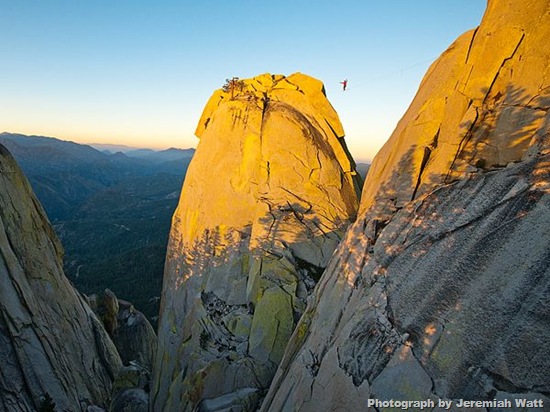
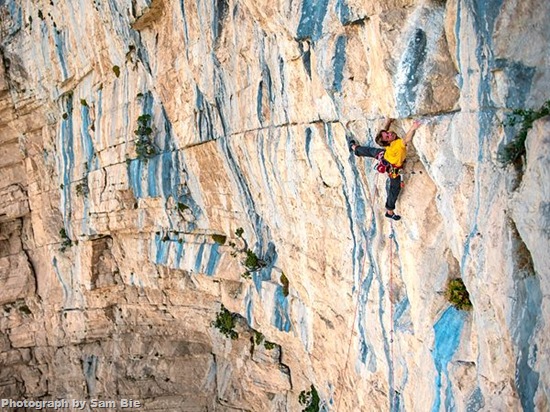
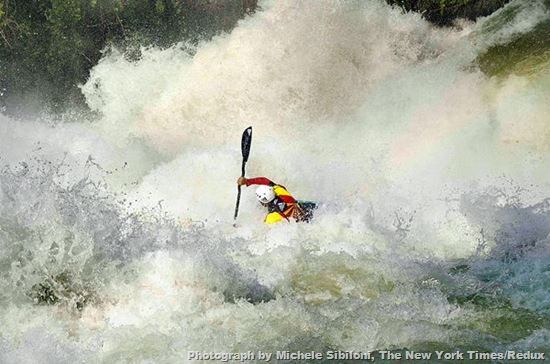


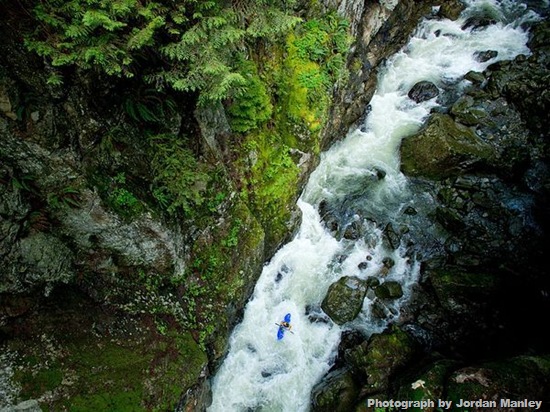
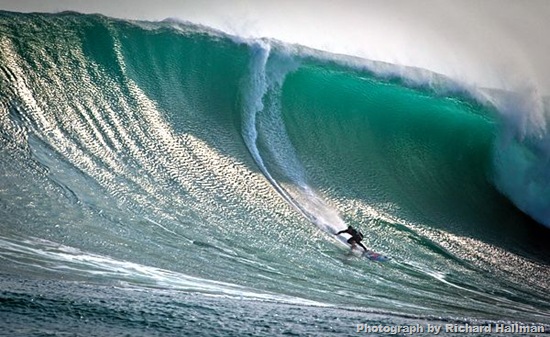
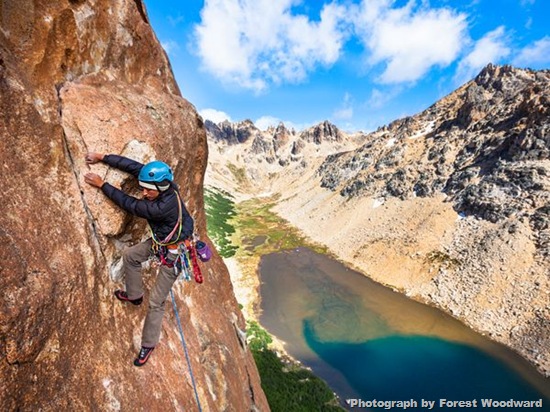

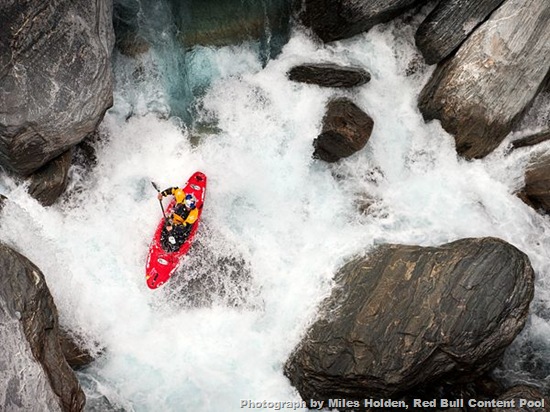
No comments:
Post a Comment
Please adhere to proper blog etiquette when posting your comments. This blog owner will exercise his absolution discretion in allowing or rejecting any comments that are deemed seditious, defamatory, libelous, racist, vulgar, insulting, and other remarks that exhibit similar characteristics. If you insist on using anonymous comments, please write your name or other IDs at the end of your message.